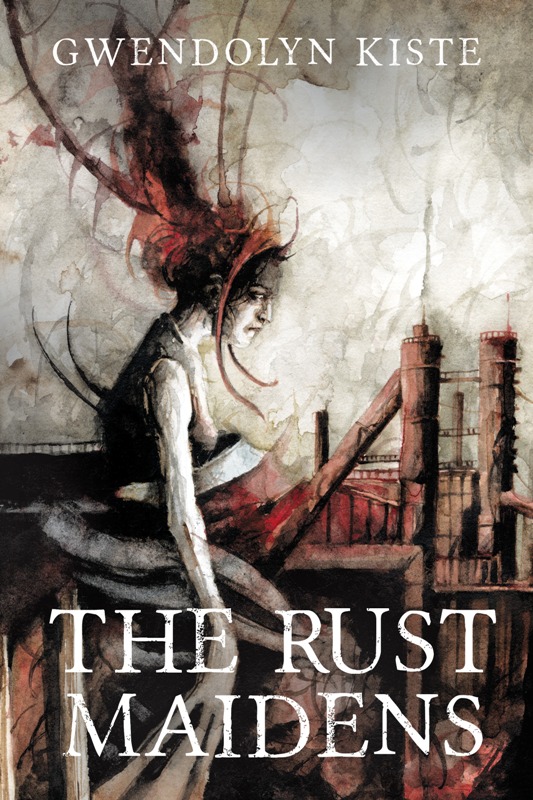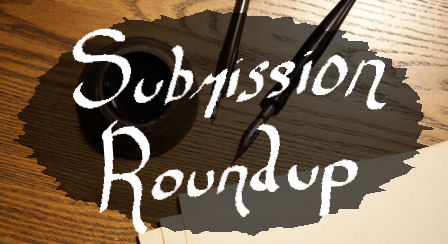Welcome back! Today, I’m thrilled to be featuring the amazing Erin Sweet Al-Mehairi! Erin is the author of the dark fiction collection Breathe. Breathe. as well as numerous short stories and poems. Erin is also an avid supporter of her fellow writers and can often be found on social media promoting dark fantasy and horror releases.
Recently, she and I discussed her inspiration as an author, her work in public relations, and how the Ohio landscapes influence her writing.
When did you first decide to become a writer? Do you remember the first story you ever wrote?
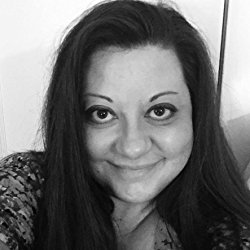 Oh, I don’t think I ever made it a point to decide. I just WAS a writer. I never believed in myself much about anything as a kid, but I dabbled in many creative types of things. My parents taught me to be an avid reader and my mom kept me busy in arts and crafts; I kept myself busy playing in the woods and carrying back mud and clay from the creek. I think eventually around junior high I just started to play around with words much as I did with any other art form, as a means of expression. However, I can’t remember the first story or poem I wrote. I wish I could!
Oh, I don’t think I ever made it a point to decide. I just WAS a writer. I never believed in myself much about anything as a kid, but I dabbled in many creative types of things. My parents taught me to be an avid reader and my mom kept me busy in arts and crafts; I kept myself busy playing in the woods and carrying back mud and clay from the creek. I think eventually around junior high I just started to play around with words much as I did with any other art form, as a means of expression. However, I can’t remember the first story or poem I wrote. I wish I could!
My junior year of high school my English teacher encouraged me by saying I should consider writing long-term based on what I wrote for her. I enjoyed reading a lot and thought what it would be like to write a book, specifically at that time Sue Harrison, internationally best-selling author of Mother Earth Father Sky, but thinking I’d never be capable, but at that point she became an inspiration to aspire to lofty goals (and many years later I’d get to become friends with her and let her know!). Poetry seemed a natural start to dabble in and I loved Poe, Frost, Dickinson, Longfellow. During this time, I had written some poems, one of them after my aunt passed from ovarian cancer, which later won a regional contest, and a holiday essay, which won our local newspaper’s contest. For the latter, I got to meet the editor and attend a luncheon and tour the newspaper building.
After that experience, in my senior year, I became editor of our high school newspaper, got the Journalism bug, and then got a substantial scholarship to a university for their Journalism/Communications/English program. At the university level, I became absorbed in using all my writing, and a few years in with my editing (being news editor of the university newspaper), for journalism and non-fiction narrative and didn’t have much time for creative writing outside of classes, except a little poetry. I joined their poetry press organization (as an assistant editor), which two of my English professors managed. They were/are award-winning poets in my state and I was lucky to be able to work on some projects with them. During dark or lonely nights awake, I still put my pencil to notebook and wrote my feelings down that way, in lyrical or poetic styles, experimenting with words, but only for myself.
Ultimately, I wanted my writing to make a difference one day on environmental, animal, political, health, and cultural issues. I wrote and edited plenty of stories, but they were all non-fiction, at first. There are all forms of being a professional writer, and I’ve been a writer and editor for twenty years now in various jobs. My poetry carried through much of that time, though it always remained on the back burner. I wrote a few stories after I had my first child, but all my binders (I write mostly using pencil and paper first) were thrown out by my ex! This is still a huge loss for me still today. The only writing I have is whatever is still at my parent’s house from before I went to college or were written within the last thirteen years. So, like I said at the start, I honestly can’t remember the first fiction stories or poetry pieces I wrote as a youngster before college, but they usually had to do with nature, animals, or fantasy, or dealing with life moments – I wasn’t into writing horror or dark fiction then – and most of my writing still features those elements.
To make a long story short, I think I just evolved into a writer… and being a writer and editor, claimed me in so many ways. I thought I could only do right by my family though being a professional non-fiction writer and editor or have a respectable job in this or a journalism and PR field. No one ever taught me or encouraged me about writing fiction or poetry to put into print that others might read. I lost decades of fiction and poetry to this mind-set. I’m only trying to make up for it now.
And you better believe because of this I encourage all three of my kids in various writing or art endeavors. My eleven-year-old even has an Instagram page of her poetry!
Your dark poetry and short fiction collection, Breathe, Breathe, came out through Unnerving last year. What can you share about the process behind this book? How long have you been working on the pieces in the collection, and how did you choose which ones to include?
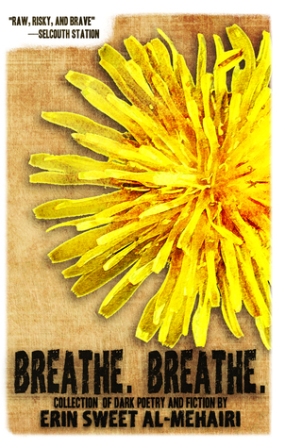 I had some of the poetry written in my stash of unpublished poems. They were a way to allow myself release from the pain I had experienced in my life. Some were a release of my emotions, some were offering hope after looking back over a decade of pain, some were channeled into characters. I re-edited these with a current look and saw a foundation in some of them to build on. I gathered those, and wrote a couple more, plus two short stories, for a chapbook version. When Eddie at Unnerving gave approval for an expanded version, then I put fire to my pencil and I wrote more. My head was all in the same space with the themes within Breathe and I didn’t have too much trouble including almost all of the new ones I’d written. It was as if the collection was writing itself, causing me to meditate, release, grow, and heal, all in a very short period.
I had some of the poetry written in my stash of unpublished poems. They were a way to allow myself release from the pain I had experienced in my life. Some were a release of my emotions, some were offering hope after looking back over a decade of pain, some were channeled into characters. I re-edited these with a current look and saw a foundation in some of them to build on. I gathered those, and wrote a couple more, plus two short stories, for a chapbook version. When Eddie at Unnerving gave approval for an expanded version, then I put fire to my pencil and I wrote more. My head was all in the same space with the themes within Breathe and I didn’t have too much trouble including almost all of the new ones I’d written. It was as if the collection was writing itself, causing me to meditate, release, grow, and heal, all in a very short period.
I mostly decided which ones based on the major theme of ‘breathing,’ in all its various forms, including ‘not breathing,’ which can be breathing through pain, anxiety, murder, restlessness, trauma, etc. I looked at what I had and then what I needed to write. Next, I chose based on sub-themes of domestic violence, abuse, sexual assault, healing from trauma, if they were Gothic in nature and fit the theme, and finally, I chose to focus on writing about creatures and monsters from nightmares that my mind created or from folklore. I let myself explore humanity, within all these various themes and subjects, and address how far we’ll go as humans to heal pain. Fear was also a major component. All of that encompasses breath, and how when we can’t breathe, we are stuck inside our minds.
Beyond that, I tried to choose an array of poems and stories that really showed off all my writing and touched elements of horror, sci-fi, fantasy, literary, crime, and which highlighted various types of poetry forms and dabbling. I possibly covered way too much ground with this one collection, but I also feel that in explaining all of that, it also did bring itself together in a magical way I can’t explain.
I wrote or chose everything to be in line with the major theme and all the sub-themes to tie threads through it all as a cohesive piece. Sometimes it was subtle, but all of them had some sort of breathing element to it, even if it was just subliminal breathing through fear, pain, loss, or just being chased, murdered, or anxiety-ridden, to simply, literally not being able to breathe. Sometimes it was an unstated statement of “this is what happens when you can’t breathe anymore and anger overtakes you.” The collection is divided up into Acts 1 and 2: breathe through fear and breathe through pain for the poetry and then the section on short stories.
Do you have a specific approach when you sit down to write a piece? Also, does your process differ depending on whether you’re writing fiction or poetry?
I don’t really have a ritual or set approach. I don’t outline, currently. I’m a pantser. I believe in writing full force, just letting it all spill out first, and then doing multiple revisions. With my writing and editing clients, or writing friends, I give them this advice too. It’s what I live myself, so I don’t get too caught up and held up because I only have infrequent moments of writing time. Many people overthink a piece and then never finish. It’s important to get down a first draft, then go back and work on it. I try not to be too calculated, or I can freeze. My mind seems to work best when I don’t “think” and just write. Of course, that probably works best with short stories and poetry, which at the moment is what I’m more productive on, so I do feel the process varies. I often won’t know where a story is going until my pencil scratches it onto the page (yes, pencil and paper). I find myself lucid about 4 or 5 a.m., right after the witching hour, and I scrabble down ideas, poems, or a few pages on a short story. Some longer stories I might stay up past sunrise working on, others I’ll take the idea and formulate a more fleshed out piece later. I write more in the winter, because I have more time then, and that affects my process too, but I’m stealing from all the ideas I had from a summer outdoors too. I’ll often edit something an embarrassing number of times, or leave it sit for months and come back to it and edit it again. As for writing on novels, that’s a bit more complicated. There is more in-depth research. There are more things to tie-up and flesh out. I haven’t used an outline in writing any that are works in progress, but I do formulate ideas ahead of time. The process differs here in that I have to carve out time and really concentrate in chunks and also there is much more editing time. I edit things an overwhelming amount of times. Like this interview I spent six months editing. LOL!
You are currently based in Ohio, my former home state and beloved birthplace. How, if at all, do you find the landscapes of Ohio figuring into your work?
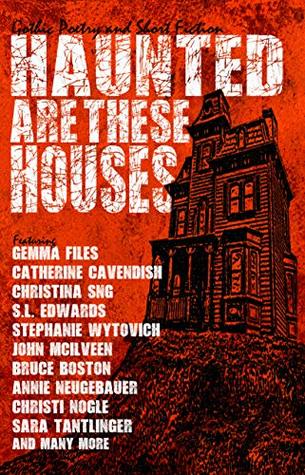 Landscapes of Ohio feature predominately in my work, as does the whole of nature. Author Mike Thorn said in his review of Breathe. Breathe., in reference to my poetry, “…often depict speakers seeking solace (or warding off danger) in the ludic spaces of the ‘natural world’ – rife with references to forests, lakesides, nonhuman animals and insects.”
Landscapes of Ohio feature predominately in my work, as does the whole of nature. Author Mike Thorn said in his review of Breathe. Breathe., in reference to my poetry, “…often depict speakers seeking solace (or warding off danger) in the ludic spaces of the ‘natural world’ – rife with references to forests, lakesides, nonhuman animals and insects.”
I am very inspired in my writing by outdoor places like rivers, forests, lakes, and oceans from all over the world, but most often the Ohio landscape too because of Lake Erie and all our amazing rivers and waterfalls. Water and nature have always been a great love of mine and have always touched my writing somehow. I grew up reading thinkers and poets like Frost, Thoreau, and Dickinson and they inspired me to write about my love of nature. I like to be outdoors when the weather is nice, which is why half of the year in Ohio is often hard for me to endure – though I do try to pull references into my writing from the other seasons as well. In the winter I am so melancholy, which I suppose also seeps into my dark fiction/poetry!
I enjoy hiking and being by the water in Ohio, frequenting Lake Erie shorelines, and you’ll find many references in my past work, and in my upcoming work, to the landscape of the Great Lakes. For instance, my poem “The Lighthouse Keeper’s Tale” was inspired by our lovely Marblehead Lighthouse and “The Driftwood of Wishes” came to me after I walked past a very large half of a tree, with its mangled roots prominent, that had been stripped bare by the water and washed in to the shoreline of Lake Erie where I was taking a walk. Sea glass and seashells from the lake have also been a common theme in my work. “The Lure of the Witch” came during a springtime drive, before the trees bud or flower blooms, in the time after winter in Ohio where everything is wet, bare, and rain and the creeks run high. My Rumpelstiltskin-like short story in Hardened Hearts, where you and I share a TOC, called “The Heart of the Orchard,” was inspired by my love of the many apple and peach orchards in Ohio.
I also like to road trip to rural places in Ohio, on the byways and highways, and off-beaten paths, being a history lover, and I enjoy all the historical elements and architecture our state has to offer. This all inspires me creatively. The rural areas bring thoughts of haunted, creepy things or tales of loss as it’s so old (and you know… rusty!), as well as its own blend of domestic horrors, and the cities, like Cleveland, bring about motivations for characters and setting. The artistic scene in Ohio inspires me too and I often come away with an idea after I’ve been to a gallery or museum or library (so many historic ones – the architecture and stained glass – Oh!) or garden. There are so many little towns and road way stops along the old highway routes, the method travelers used more often before the interstate was built, that are dilapidated but timeless. A bygone era, a step back in time, a horror story waiting to happen. Often times, real horror stories do. It’s also quiet, desolate, and removed from society. I love traveling these roads and picture all the stories going on around me. You’ll often find me telling people that a story or poem first breathed into life when I was riding in the car.
In addition to your writing, you also work as a marketer and publicist in the publishing industry. Has your work in marketing the books of other authors changed how you approach the marketing for your own books? Do you have any advice you’d like to share with writers out there about good tips for promoting their work?
It’s hardest to promote your own work, I think. If I hadn’t had the community support for my work, I don’t know how I’d have done it. I force myself, as a role model to my clients and other authors, to push my work, because I don’t want to be a hypocrite, and because I know it works, but yes, I get massive anxiety every time I post about myself. It really does work best, especially around release, to have lots of other people sharing links, posts, reviews, etc. That is one of the major keys to success in indie horror, I believe.
I don’t think my approach has really changed. I’ve done public relations, media relations, marketing for so many years for so many different things (a healthcare system, a hot air balloon festival, clothing, music, art, government, libraries, non-profits), so I usually take what it is and look at it individually to see all its positives I can offer to promote it. Each author I work with now I view as an individual brand and business. Identify the brand, its target, its current reach, its positives and negatives, and come to a solution, advice, method of play. It’s really no different with my own, except I do believe it works best when an author works with someone (and their publisher) as a team. As I said, someone else supporting and word of mouth is huge.
Hiring a publicist in indie doesn’t mean you can sit back because you’re shy or too busy, generally, depending on how well known you are, your likability factor, your back catalog, and what not. Readers and social media followers are still going to want YOU. So, hire a publicist, and better yet, what I’d prefer to be viewed as, a public relations professional who can consult with you and help you grow. Listen to them when they give you advice on how to present and focus yourself and sell your own work alongside what they are putting out for you. You can’t just hire a blog tour company, or a publicist, and sit back and expect it to work and produce all sorts of reviews and sales for you. It doesn’t work that way.
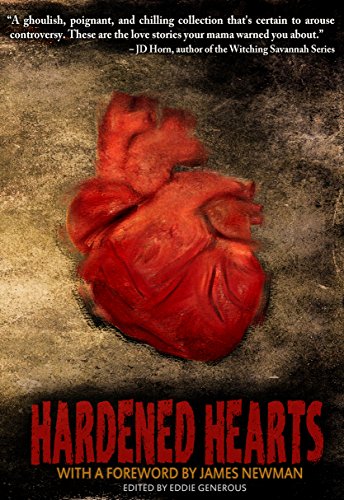 I find that a majority of writers are stubborn. What I’ve done for my own book is put into action what I can’t get most other authors to do (bless the ones that listen). And that’s build yourself as the brand. Once readers like you and support you, they will buy anything because they like your writing and will always read you or they will want to support you at least. I looked at my collection and all the sorts of themes I could pull out of it for various targets and I used that to push out cool references and facts, especially on Twitter. I focused on folklore for a while, tagging #folklorethursday for instance in statuses where I mentioned something folkloric in one of my poems or stories, other months I’ve mentioned my advocacy for domestic violence awareness and showed how my book helped me start to heal, and I also promoted my reviews, but the main thing is I’ve jumped on as many interviews as I could whether print or podcasts. I wrote guest articles with good SEO tags for my book because those are lasting ways for people to find you in a Google search as well as a way for readers to get to know you better.
I find that a majority of writers are stubborn. What I’ve done for my own book is put into action what I can’t get most other authors to do (bless the ones that listen). And that’s build yourself as the brand. Once readers like you and support you, they will buy anything because they like your writing and will always read you or they will want to support you at least. I looked at my collection and all the sorts of themes I could pull out of it for various targets and I used that to push out cool references and facts, especially on Twitter. I focused on folklore for a while, tagging #folklorethursday for instance in statuses where I mentioned something folkloric in one of my poems or stories, other months I’ve mentioned my advocacy for domestic violence awareness and showed how my book helped me start to heal, and I also promoted my reviews, but the main thing is I’ve jumped on as many interviews as I could whether print or podcasts. I wrote guest articles with good SEO tags for my book because those are lasting ways for people to find you in a Google search as well as a way for readers to get to know you better.
I’ve been easily promoting my book in any spare time I had for a year now and people are still buying and promoting it, because others are still talking about it on social media. I’m still getting asked for interviews, I just wrote a handful of guest articles for a one-year anniversary celebration, and reviews still roll in.
I’ve been around the indie horror and historical book world for eight years and the voluntary promotion of OTHERS is a must. I still do reviews when I can and host people on my blog. I share other’s work on my social media (and not just those who are my clients). Once you help others, for years before you put out a book, or ongoing, or after you put out a book, people will support you. The right people will, anyway.
Out of your published work, do you have a personal favorite piece?
Picking a favorite piece of writing work is like choosing my favorite child. I have three children and I could never pick a favorite, so though I have many more pieces of work that are my babies too, it’s still hard. I like different ones for various reasons.
From Breathe. Breathe., most people’s favorite is “Dandelion Yellow” due to how they said it was shocking and unforgettable, and I did enjoy writing it, even if it is painful, and consider it one of my best pieces. However, I feel my personal favorite short story so far is “Life Giver of the Nile,” about a woman in modern Egypt’s encounter with the goddess Anuket. This not only stems from my love of Egyptology, but also channels scenes from a re-occuring nightmare of my childhood in which I was being drowned, and I’d wake up gasping for air. I loved being able to write about the streets of Cairo, the Nile, and enjoyed creating the characters.
As for my poetry, from Breathe. Breathe. I’d say maybe “Earl Grey Tea,” which was inspired by the writings of Agatha Christie (and to his horror, a gift of a beautiful tin of this favorite kind of tea of mine from my son). The poem blends my love of mystery, history, and the 1920s and is one of many domestic horror pieces in poetry or prose that I like to create.
I also liked the one I wrote for Enchanted Conversation: a fairy tale and folklore magazine, called “Chained by Love,” about the medieval mermaid Melusine and her lover Raymond. I have an obsession with mermaids.
What upcoming projects are you currently working on?
I’m working on a poetry-only collection featuring water elements, in which the writing is fairly completed (paper and pencil, need to type and edit). Water has always been a huge source of inspiration for me, as stated above, supplying me with energy, both physically and mentally. I feel at peace by the water, but also the anger and danger in its depths. I can channel emotions, and give and take emotions, near the shoreline. I believe water has special power for me. There will be sadness in this collection, but also sea monsters, ship wrecks, and coastal village intrigue. I’m a huge fan of the last three. I hope others like it, but I’m writing it because it’s fun for me! I’m looking for a publisher for it.
I’m also working on a short story collection based on the works of Van Gogh. In larger works, I’m working on a novel still that I’ve been picking away at for years. It’s a revenge novel, featuring an abused woman and the ghost of Emily Dickinson. It takes place in Emily’s hometown. I’m excited for this one.
And since writing my Vahalla Lane series in Breathe. Breathe., I’ve had some good response to it and so I’m writing on a novella when I have the chance featuring the story of one of the women, both in prequel and in sequel to what happens.
And I am going to be working soon on a few pieces for several anthologies I was invited into for 2019 and some poems and short stories for magazine invites as well.
Hopefully, my friend Duncan Ralston and I will start to flesh out some work on a novel together which features our mutual interest in cults.
Besides that, I’ll be editing more novels and coaching authors starting in January and I will be looking for more options available in which I can curate and edit another anthology.
Big thanks to Erin Sweet Al-Mehairi for being part of this week’s author interview series! Find her online at her website as well as Facebook, Twitter, Instagram and Goodreads.
Happy reading!
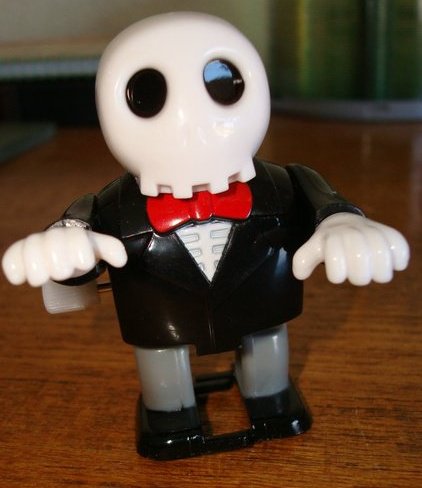 I’ve wanted to be a writer for as long as I can remember. I think that at some point, when I was a kid, I realized that writers were the people who made up all the stories I loved, and from then on I wanted to be one of those people.
I’ve wanted to be a writer for as long as I can remember. I think that at some point, when I was a kid, I realized that writers were the people who made up all the stories I loved, and from then on I wanted to be one of those people.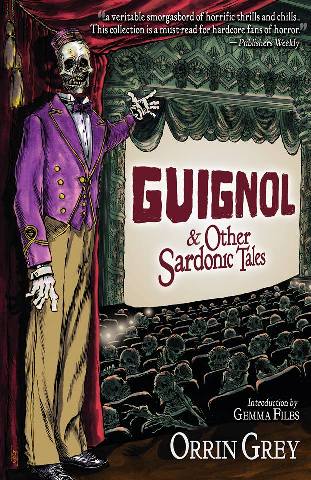 So, I decided to cheat a bit and answer all of these questions in one block, because the answer to one of them informs the answers to the others, and vice versa. Basically, each of my three collections was assembled differently, in no small part because I was in a very different place in my career when each one came out. Never Bet the Devil & Other Warnings was my first collection, but I had been writing stories for years, so when I was putting it together it was just kind of a situation of, “what are the best stories I’ve written so far, and which ones fit together.”
So, I decided to cheat a bit and answer all of these questions in one block, because the answer to one of them informs the answers to the others, and vice versa. Basically, each of my three collections was assembled differently, in no small part because I was in a very different place in my career when each one came out. Never Bet the Devil & Other Warnings was my first collection, but I had been writing stories for years, so when I was putting it together it was just kind of a situation of, “what are the best stories I’ve written so far, and which ones fit together.”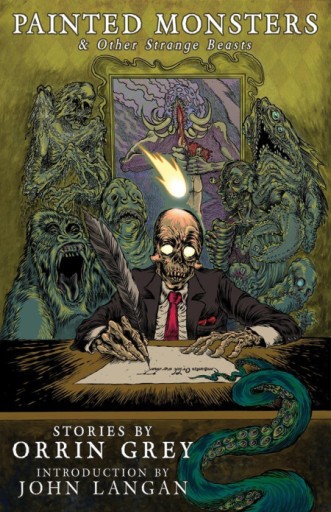 Still keeping with this theme, what in your opinion is the perennial appeal of the slasher film? Do you remember the first slasher film you saw, and do you have a personal favorite?
Still keeping with this theme, what in your opinion is the perennial appeal of the slasher film? Do you remember the first slasher film you saw, and do you have a personal favorite?
